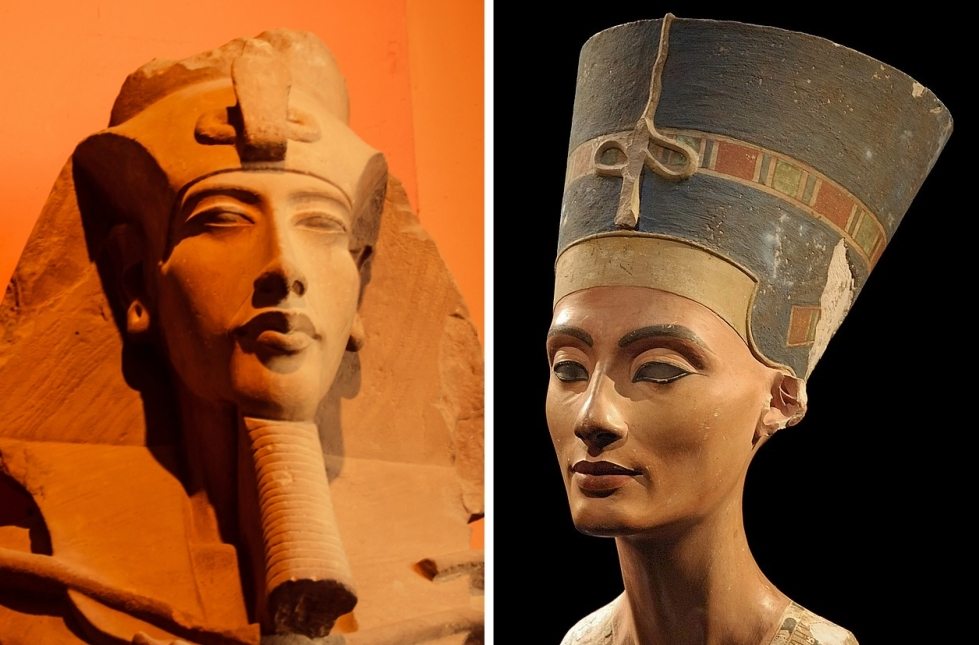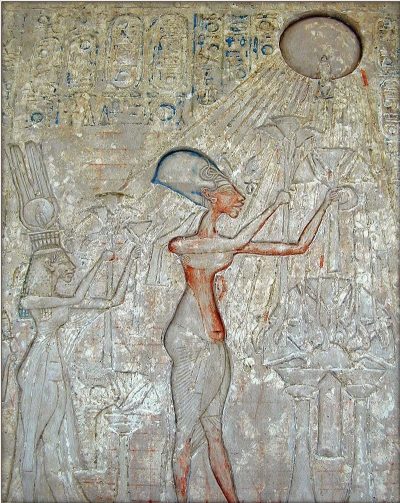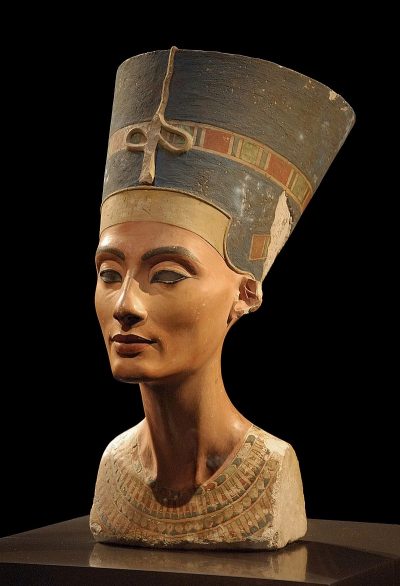Akhenaten and Nefertiti
Akhenaten and Nefertiti
Akhenaten and Nefertiti
-
Hannah
-
Hannah

Akhenaten of the 18th Dynasty was my mother’s favourite pharaoh. He was originally known as Amenhotep IV, but he adopted the name Akhenaten, meaning ‘living spirit of Aten’, in line with his religious reform. For as long as could be remembered, Egypt had been polytheistic, worshipping many gods, but during his 17-year reign Akhenaten established Atenism, in which worship centred around Aten, the sun disc. The god was based in part on the sun god Ra but had greater power: he was the Creator.
It was traditional for pharaohs to be seen as the earthy incarnation of the god Horus, but Akhenaten saw himself as the son of Aten. Aten cast its life-giving rays upon the royal family, and they in turn gave life to all the people. Only Aten and the royal family were allowed to worship Aten; everyone else had to worship Akhenaten.

Akhenaten and Nefertiti worshipping Aten
As part of Atenism, Akhenaten moved the capital to a new city he had built called Akhetaten, meaning ‘Horizon of the Aten’ in Al Minya, Middle Egypt. (It later came to be known as Tell el Amarna, after the Beni Amran tribe that lived there.) It was here that Akhenaten was buried, although it’s thought that his mummy was later moved to the KV55 tomb in the Valley of the Kings after Amarna was abandoned.
Modern excavations of Amarna in the early 20th century led to the discovery of one of the most iconic artefacts of this ancient civilisation: the bust of Nefertiti, found in the studio of the sculptor Thutmose.

Nefertiti bust, Neues Museum, Berlin
Nefertiti means ‘the beautiful one has come’. She has been made famous by the beautiful bust, but in fact we don’t know a great deal about her. Records indicate that she bore Akhenaten six daughters, one of whom would marry Tutankhamun, and it’s clear from inscriptions that she worshipped Aten alongside her husband.
Despite Akhenaten’s great passion for Atenism, however, it was not popular. Not only had Akhenaten taken away people’s right to worship the gods, but he had gone about destroying all references to the god Amun-Ra. Plus, in declaring himself the highest priest and interfering with religion, Akhenaten had diminished the power of the priests (which was, in fact, his primary objective). People felt that because Akhenaten had turned his back on the gods, they had turned their backs on the people of Egypt, which was why a plague had spread through the land.
After Akhenaten’s death, the priests led a shift back to the pre-existing cult of Amun-Ra and polytheism, discrediting Akhenaten and undoing his work. They even talked Akhenaten’s son Tutankhaten into changing his name to Tutankhamun, and he reinstated Thebes and Memphis as the capitals of the country.
The Restoration Stela at Karnak Temple shows how Tutankhamun brought order back to Egypt:
He restored everything that was ruined, to be his monument forever and ever. He has vanquished chaos from the whole land and has restored Maat [order] to her place. He has made lying [reference to Akhenaten] a crime, the whole land being made as it was at the time of creation.
Was Akhenaten, the revolutionary, a bold individual striking out into a brave new world, or was he simply a power-hungry heretic? I will leave you to decide.

Song of the Nile: available to buy now
Photo credit: 1) Yaser Alamoudi/Shutterstock.com; 2. Jean-Pierre Dalbéra, source; 3) Philip Pikart, source.